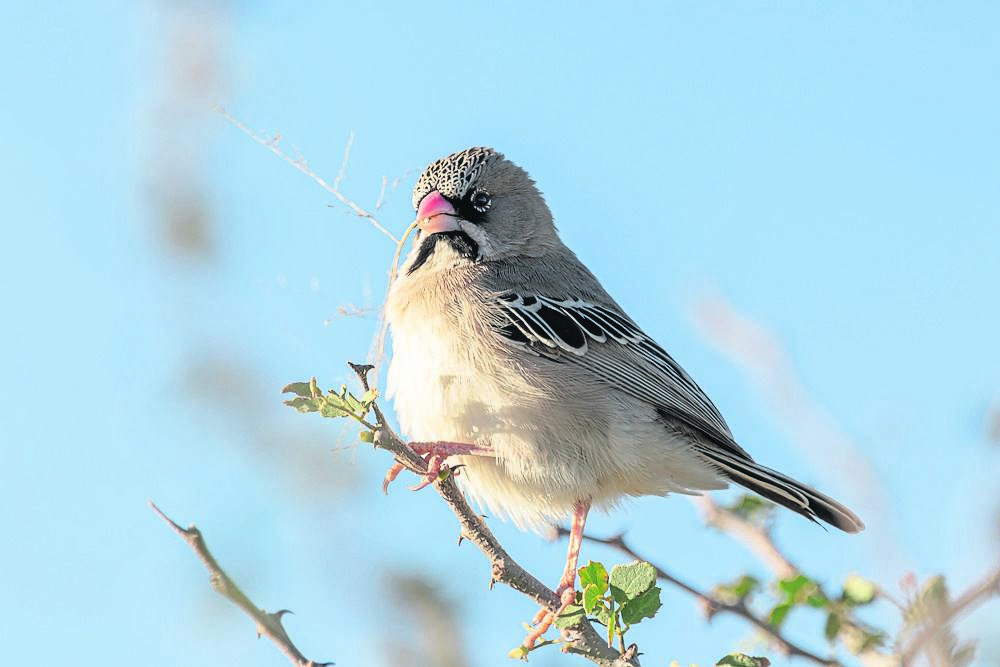
This month we turn our attention to one of the smaller birds that is commonly found in the dry thornveld savannah of the Northern Cape and other parts of southern Africa.
The scaly-feathered weaver Sporopipes squamifrons (or scaly-feathered finch, as it was previously called) is only 10 cm to 11 cm in length and weighs around 10 g to 12 g.
It has a characteristic black and white scaled forehead, a pinkish bill and two malar stripes running down its throat. These black stripes give the bird its aptly derived Afrikaans name: “baardmannetjie”.
Males and females look identical and they usually occur in small groups of up to 10 to 12 birds. Baardmannetjies can be frequently seen sitting on fences along gravel roads, but they also occur in gardens and farmyards.
It is a near-endemic species to Southern Africa, meaning that its range only marginally extends beyond the borders of Southern Africa into south-western Angola. They are one of the top five most common species in the Mokala National Park and the Kgalagadi Transfrontier Park (KTP).
Their diet consists primarily of grass seeds, but they will also indulge in insects, including termites. Like most seedeaters, these birds will nourish their chicks with an insect-rich diet for rapid development before they leave the nest.
They are often seen actively feeding on the ground in small groups, hopping around energetically and taking flight as soon as they are disturbed. They usually do not fly too far before settling on a fence or small thorn tree.
The species builds one of the most commonly seen nests in the dry thornveld landscapes of the Northern Cape, a hollow ball of dry grass stems with a spout-like entrance tunnel on the side, about 8 cm in length. A single nest is constructed in small thorn bushes and adjacent bushes have multiple nests belonging to other pairs. They lay, on average, four pale-greenish eggs and the chicks take up to 18 days to grow before leaving the nest.
So, if you are driving around the Northern Cape thornveld and come across a group of small, brownish birds feeding on the side of the road or see a flock of small birds fly into a small thornbush, they will more than likely be “baardmannetjies”.
Stop, and admire these tiny avian icons of our arid, thorny landscapes, remembering that one can only see these little beauties within Southern Africa.
– Dr Doug Harebottle, chair of the Gariep Bird Club
- Contact the club at birdclubgariep@gmail.com.




 Publications
Publications
 Partners
Partners
























